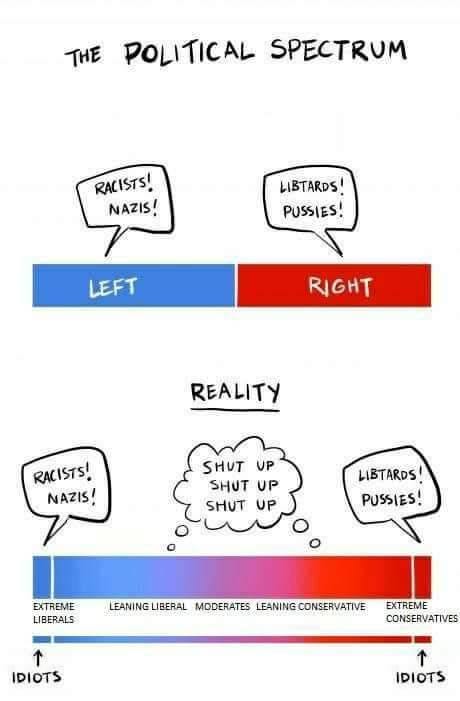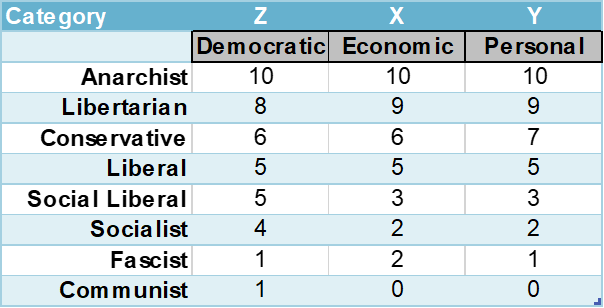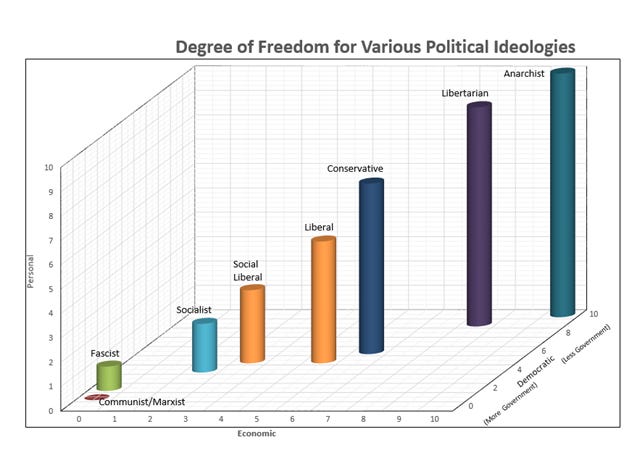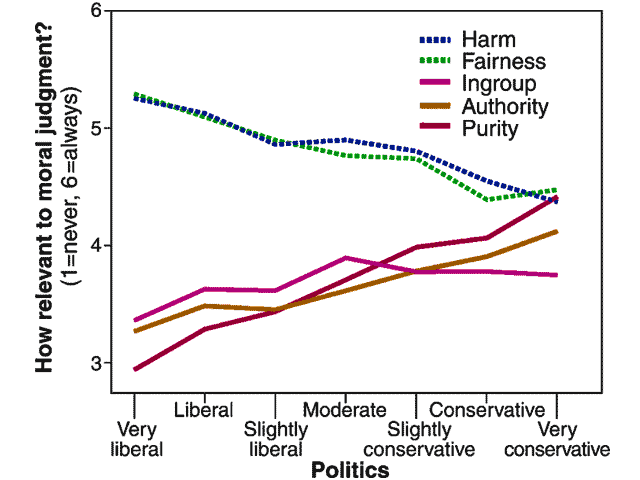Introduction
At its core, the Purple Wave is all about politics. Why? Because politics has consequences. It affects our every day life. Sometimes making it better than what it was. But more frequently now, making it worse.
A simple example of that last sentence is that, in 1982, Canada had its constitution repatriated and in it was included the Charter of Rights and Freedoms. Here are some key entries in that document:
2. Everyone has the following fundamental freedoms:
(a) freedom of conscience and religion;
(b) freedom of thought, belief, opinion and expression, including freedom of the press and other media of communication;
(c) freedom of peaceful assembly; and
(d) freedom of association.
6. (1) Every citizen of Canada has the right to enter, remain in and leave Canada.
7. Everyone has the right to life, liberty and security of the person and the right not to be deprived thereof except in accordance with the principles of fundamental justice.
8. Everyone has the right to be secure against unreasonable search or seizure.
52. (1) The Constitution of Canada is the supreme law of Canada, and any law that is inconsistent with the provisions of the Constitution is, to the extent of the inconsistency, of no force or effect.
Note the very last. It is “the supreme law of Canada.” Yet sections 2, 6, 7and 8 have been broken by both Provincial and Federal governments these past two years.
In this issue we are going to explore what is the “political spectrum” and then comment on politicians in general. Together, the politicians and the political parties they represent decide what the laws are going to be and how they are to be enforced. We, the people, are the victims of the consequences of those actions. As a result we need to collectively do a better job of picking both if we want to avoid negative consequences.
Past and Current Issues - audio file
Feature Article
The Political Spectrum
I started out wanting to write something about the environment and environmental activists. This quickly evolved with the realisation and acceptance that there is a portion of humanity that can only best be described as zealots; people so dedicated to a cause that facts do not matter, whether it be the environment, Covid, or even religion as just three examples. We all know people who hold a view so strongly that no other view is accepted or tolerated. It was at this moment I realised that an observation I had made previously in my search for truth now made more sense. Emotionally, we are all somewhere on the scale of valuing being part of a collective, with the “left” favouring tyranny of the collective and the “right” favouring the freedom of being an individual.
Several years back I wanted to better understand the “political spectrum.” This first began with trying to understand the origins of fascism.
This began with Antifa, short for Anti-fascist, a term adopted by a group of people that used violence to impose their views on others. The problem is that one trivial item I recalled was that Adolph Hitler’s paramilitary wing, the “Brown Shirts,” used very similar techniques. The same for Mussolini’s “Black Shirts.” Yet those two are examples of fascism. Both tyrants were socialists. Socialists that hated, no despised, their competitors, the communists. Just like Cain and Abel.
In my search for truth, I then looked up the phrase “political spectrum.” An early reference was Wikipedia but I found it wanting in that most of the diagrams summarising the various ideas are two dimensional, except for the Vosem Chart. The latter I must agree with in that we are dealing, from a societal perspective, with three primary measures: society, economic, and government. These can be summarised as describing degrees of Freedom.
What I then did is modify the Vosem Chart idea by setting my three axes as being a measure of Personal Freedom, Economic Freedom, and Democratic Freedom. The reciprocal of the latter we can describe as being a measure of Government control. I then gave a subjective score to the most common political terms I was aware of. This is illustrated in Table 1.
Now I need to quickly summarise what my understanding of each category is.
An Anarchist believes in total personal and economic freedom with no government control. “Democracy” is all about freedom of personal choice. When there is no government, I give that a Democratic score of 10 as you are free do as you choose with no Government to interfere. Similarly Personal and Economic freedom are at a maximum as you can do as you please, including in the market place, and thus both also have scores of 10. Libertarians typically are those who understand the need for common services and thus limited government yet still value maximum personal and economic freedom. Classic “Liberal” is typically middle of the road so that is how I scored it. Because “Conservatives” usually want a bit more economic and personal freedom as well as smaller government than classic liberals I scored them accordingly. Fascism of the early 20th century is characterised by personal freedom being greatly limited under severe government control yet with some economic freedom whereby individuals outside of government still ran businesses (i.e., some economic freedom).
The results are also shown in graphical form in Figure 1. Note how the trend is left to right? How the left side is authoritarian dominated by big government and the right values personal liberty with less governmental control?
Now, let us return to where I started - activists. It doesn’t matter what the topic is, the activists share common traits. Just to illustrate, let us use environmental activists. They take a very strong position to the point that the use of violence is not only condoned but encouraged. They do not rely on facts, or if they do, it can easily be shown that the “facts” are lies or unethical manipulation to get a desired effect. Take as just one example the “97% of climate scientists agree” trope. It evolved from a research paper published by John Cook whereby he did a search of titles of scientific articles dealing with climate. Out of about 12,000 papers he narrowed it down to 65 that fit his very tight definition of what he wanted to report. All but one, 97% of those 65, had the view he wanted to promote. Note that the actual value is 98% but who knows why this rounding error was allowed.
The point is that activists do not like facts. They invent their own to give the impression they are right. But the façade cannot be sustained and, thus, they first fall back on name calling followed by outright violence.
But the political spectrum is just reflecting humanity. Jonathan Haidt, a social psychologist, has written an excellent book titled “The Righteous Mind.” The most obvious theme in the book is that we are born with a moral matrix with six identified primary foundation pairs:
Care/Harm,
Fairness/Cheating,
Loyalty/Betrayal,
Authority/Subversion,
Sanctity/Degradation, and
Liberty/Oppression.
Each pair is associated with the presence or absence of a characteristic emotion. These are, in the same order as the foundations;
compassion,
anger,
pride,
respect,
disgust and
resentment.
Through extensive polling by Haidt and associates, they found a distinct relationship between the moral foundations a person relates to and their position on the political spectrum. Those on the left predominantly say that Care/Harm and Fairness/Cheating foundations are significantly more relevant to them than the other four foundations. On the other hand, those on the right have a balance of all six foundations. This implies that the more “right” you are the more balanced your moral matrix is.
At first blush this appears to be reasonable. Those more on the left explicitly say they have compassion for people and are solidly against cheating. But unfortunately, reality gets in the way. Take for example what we have witnessed in recent years in the US, and which has now spilled over into Canada. The Democrats say they are dominantly about compassion and are anti-cheating. Yet they consistently do the opposite. Haidt does summarise these moral foundations well though in that “morality binds and blinds”; people come together by shared morals but in doing so can blind themselves to those same morals.
Another dominate theme in his book is that we collectively are “90% chimp and 10% bee”. While we have an innate tendency towards independence (the chimp part) we willingly cooperate to make our collective lives better, a trait shared by few other creatures but is exemplified by the beehive where each works hard for the collective good. Personally, I must agree with that description. I for one value my independence but at the same time am willing to work with others for a cause that benefits all of us.
In summary the “left” favours tyranny of the collective and the “right” favours the freedom of being an individual. The only group either end can hope to convince with an argument are those in the middle of the spectrum. They are neither “left” nor “right” but can agree with arguments that are morally acceptable. Unfortunately lies presented as facts are easily accepted. The problem is that tyranny lies with the left, and given the opportunity to take control, they are reluctant to give it up.
Submitted by: Alan Aubut
Second Article
The Post Turtle Story
The following is a variant of a story that has been shared a lot on social media the last few years:
“While suturing a cut on the hand of a 75 year old Texas rancher, whose hand was caught in a gate while working cattle, the doctor struck up a conversation with the old man.
Eventually the topic got around to politics and then they discussed some new guy who was far too big for his shoes as a politician.
The old rancher said, ‘Well, ya know, he is a post turtle.’ Not being familiar with the term, the doctor asked him what a ‘post turtle’ was.
The old rancher said, ‘When you’re driving down a country road and you come across a fence post with a turtle balanced on top, that’s a ‘post turtle.’
The old rancher saw a puzzled look on the doctor’s face, so he continued to explain. ‘You know he didn’t get up there by himself, he doesn’t belong up there, he doesn’t know what to do while he is up there, and you just wonder what kind of a dumb ass put him up there in the first place.’ “
The reason I mention it is because it is used as a commentary on politics, especially politicians. Far too many elected “representatives” do little, if anything, to “represent” their electorate. They are “post turtles”; they don’t know what to do when at the legislature.
But this story is not a coy way of criticizing the politician. No, it is pointing out that the useless politician, the “post turtle,” did not get there on their own. Someone put them there. In the case of the useless politician, it was the people who voted for that person. The ‘dumb ass’ who put him there.
That begs the question, why do so many people vote for “post turtles?” When talking to others, the frequent refrain is that all politicians are liars and cannot be trusted. Myself, I have not fallen into that trap in that, from my experience, only about 20 to 25 percent of a group will fit a particular stereotype. I do admit often wondering why so many of those elected say little if anything. Take for example at the federal level. How many parliamentarians have anything they say reported? That could be, and likely is, due primarily to journalistic bias. Only sound bites that can be twisted to serve a particular purpose are reported. Or if your representative was lucky enough to get a cabinet post and thus is a target for reporting.
In short though, the problem is that it is us, the electorate, who must take responsibility for the quality of representation we have. I know that for myself, in the past the choice was too often the best of a bad lot.
When a company is wanting to hire a person to fill a certain role, they concentrate on qualifications backed up by interviews to ensure the purported expertise is there. Wouldn’t it be nice if we had something similar in place to winnow out the poor-quality potential candidates? Having a background that I thought would make me qualified, I put my name forward for consideration during the last Federal election. The party that I chose to be a representative of, one whose platform melded well with my personal morals, ethics, and convictions, vetted my application, including being interviewed. I passed the hurdle. I was deemed qualified.
Then I got to see who my opponents were. A couple I got to meet personally. The others, the opportunity never occurred. Of those two I can honestly say they are nice people. But in conversing with them I did not find a passion for their platform, party, and the electorate they wanted to represent. Something I did, and do have, as anyone who is a frequent reader knows by now. I found that strange. In the end the three of us lost, with me being a distant fourth. The winner was the incumbent. A person with a track record of being a “post turtle.”
I must admit that I, for one, faced a serious problem in that it was not a “fair race.” For example, there were two debates organised whereby the candidate could voice their position on issues the organisers thought were important. I was not invited. Early in the process I had a long interview with a small local newspaper. None of it was ever published. A couple of times I had interviews recorded. All were not long but long enough for me to express my perspective, or so I thought. Then I got to see what was aired. Biased sound bites without context and from which even I would not have any idea what point was being made if I had not been the one who said those bites.
In retrospect, while I have no regrets, I am not anxious to do it again. There are too many problems that I now can see having done this firsthand, make it difficult for candidates and the electorate. It is not a level playing field. Competence is not encouraged. Biases in how and who gets face time abound. The audience is given a false view of who the choices are. What their abilities are. They are not given enough information for a voter to determine if a candidate is a potential post turtle or the hoped-for representative the elector wants. Voting is a crap shoot. No wonder so many are disillusioned with the process and why voter turnout is so poor, about 60% locally for example. And why too often post turtles are elected.
So, what is the solution? Now that I have been on both sides of the voting process, I can see ways to make it fairer but even I must be realistic. It won’t happen. For example, the media should make a conscious effort to provide fair and equal coverage of all candidates. Debates should be encouraged. But that calls for a lack of bias, something all traditional media no longer have. Primarily because they have been bribed by the party currently in power. Using our tax dollars as the primary source of advertising funds. The downside is that at its core, an election is all about marketing. Advertising. Whoever has the biggest bank account has the better chance of giving as many electors an idea of who a candidate is, or pretends to be. And when one party is backed by the government treasury, what can I say?
I believe in the search for truth. I try to be fair. I do my best to be a good person. Others may disagree with the latter, but I still try. I do accept that people will remember one bad or questionable word, or action and forget all the good. Such is life. I could just shrug my shoulders and just accept that our electoral system, as just one of a myriad number of examples, is not fair. But I can’t. So, I do what I can to show as many people as possible what competence is like. Therefore, I write for The Purple Wave and continue to look for other ways of getting around the obstacles I know exist. All in the hope that, if given another chance, I will have already given as many people as possible an opportunity to see who I am and hope they will then give me serious consideration. Convince them that I, for one, have no intention of ever being a post turtle if ever elected.
Submitted by: Alan Aubut
Links of Interest from Canada and Around the World
Video (22:21 min.) - Stew Peters interviews Dr. David Martin who exposes the real reason why Canadian Prime Minister Justin Trudeau is refusing to negotiate with his constituents on the Canadian bioweapon mandates. A quote from Canadian Prime Minister Justin Trudeau: “Normality as it was before will not come back full-on until we get a vaccine for this.”
With no evidence that a vaccine has ever been successful since Pfizer’s first Coronavirus spike protein vaccine patented in 1990, this statement was unfounded. What Trudeau didn’t tell us is that Canada controls the mRNA vaccine platform and is becoming enriched by both Moderna and Pfizer’s partnership with BioNTech.
Criminal Canadian Monopoly is Why Trudeau Won't Back Down
Video (0:48 minutes) - A “white supremacist” serving chai tea and samosas while taking part in the peaceful demonstration in Ottawa.
A white supremacist protesting
Video (14:51 minutes) - Dr. Robert Malone shared a message with #freedomconvoy truckers and Canadians Saturday, February 12, 2022, via an outdoor video screen at Parliament Hill.
Dr. Malone’s Message to the Truckers
Video (1:33 minutes) - Dr. McCullough's message that also was played on the outdoor video screen at Freedom Convoy 2022 Saturday, February 12th in Ottawa.
Dr. Peter McCullough’s message to the truckers
Video (1.07 minutes) - A Canadian armed forces veteran, cleaning up the war memorial in Ottawa, gives a CBC reporter a blast of truth. Including using salty language to describe their despicable actions over the last two years, and in particular the last two weeks.







